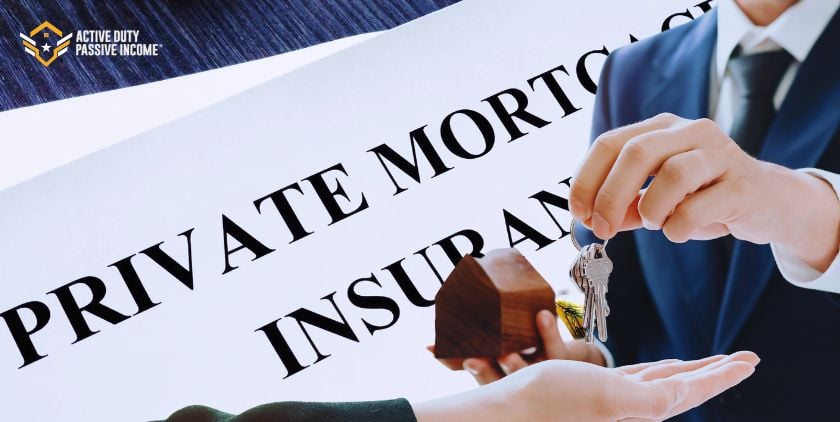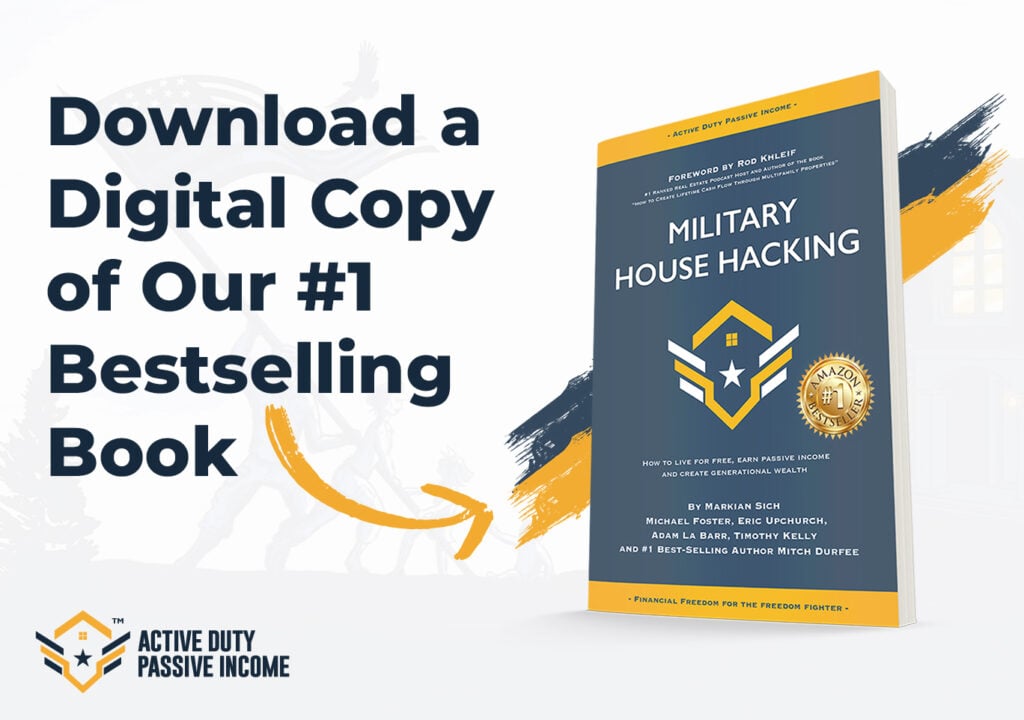When acquiring a VA Loan, you might not know that you will not in most cases be stuck with the additional cost of Private Mortgage Insurance (PMI). Fortunately, one of the significant benefits of VA loans is the absence of PMI. As you move through the article there should be some extreme money saving information, but also it is wise to understand each part of your loan.
Let’s take a moment to explain why understanding PMI is so important and how it can not only cost you money if you do not understand it, but more importantly can save you a lot of money as you make decisions on what product you use to buy a new property.
Many get confused when they are wanting to use their VA loan for a second or third time and are even educated to believe the VA funding fee and PMI are equal products. This is simply not the case.
Comparing VA funding fee to Private Mortgage Insurance is like comparing apples to oranges.
I want to quickly share how on a primary home purchase I was well educated on this topic by my amazing lender and how the lender saved thousands, all while only putting down 5% on my conventional loan!

Here’s how the process went:
- Signed my contact for the property
- My lender and I got the rate locked in
- We ran all of the numbers in the following scenarios (5%, 10%, 20% down)
- I decided I wanted to try and keep as much cash in my hands (because I wanted to buy more investments!)
- After that conversation my lender suggested to lower the payment that would typically have PMI for a conventional with less than 20% down we should shop around for PMI policies.
- We added up what the “recoup time” would be for the $100 PMI payment a month until 20% was paid off, to how much a lump sum policy would be, ($3200 in closing). It was going to take a long time to get to a 20% paid off amount so when I did the recoup time I knew after 32 months of $100 payments I would be in the green!
- I bought the lump sum Private Mortgage Insurance policy and it was added to my closing costs. Overall because I am going to own the house for over 32 months each month over the first 32 months I am making money off myself even if the loan is not at a 20% paid off amount!
This is not a well advertised way of doing business but it is worth asking your lender about because depending on what type of loan you need to use learning how each one operates is vital!
Now we will jump into really understanding the basics of what Private Mortgage Insurance is and how it works or is non existent with the VA loan in most cases!
What Is Private Mortgage Insurance?
Private Mortgage Insurance, commonly known as PMI, is a type of insurance that conventional mortgage lenders require from borrowers who cannot make a 20% down payment. It protects the lender if the borrower defaults on their loan.
PMI and Why You Pay It (Sometimes)
PMI is usually a requirement for conventional home loans where the borrower was unable to meet the standard 20% down payment. Essentially, it’s a safety net for lenders – it ensures they will not lose money if the borrower can’t make their mortgage payments. Lenders all have different ways for borrowers to pay for this product. Like we talked about above some lenders require a monthly payment and some will allow lump sum payments for the policy upfront. Doing the math with your lender is very important to see which form you should look into paying!
Do VA Loans Have PMI?
Now, the heart of the matter: Do VA Loans have PMI? The answer is a resounding no. Veterans Affairs (VA) loans are government-backed loans provided to eligible veterans and service members. One of the key benefits of this loan is the absence of PMI, regardless of the down payment amount. Not having to pay PMI typically saves the buyer $100-$200 a month and this monthly payment is removed upon request once the loan gets to 20% paid off.
VA Home Loan Funding Fee vs PMI
Funding Fee for 1st Use:
For first-time use of a VA loan, the funding fee is generally higher. The specific percentage is determined based on factors such as the down payment amount and whether the borrower is considered a regular military member, Reservist/National Guard member, or a surviving spouse.
- Regular Military:
No Down Payment: If the borrower is a regular military member and makes no down payment, the funding fee is typically 2.15% of the loan amount.
Down Payment: If the borrower makes a down payment of at least 5% of the loan amount, the funding fee decreases to 1.5%.
Down Payment of 10% or more: If the borrower makes a down payment of 10% or more, the funding fee further decreases to 1.25%.
Table: VA Funding Fee Rates for Loans Closed on or After April 7, 2023
| Loan Type | Down Payment | First Time Use | Subsequent Use |
| Purchase loan | 0% | 2.15% | 3.3% |
| Purchase loan | 5% – 9.99% | 1.5% | 1.5% |
| Purchase loan | 10% or more | 1.25% | 1.25% |
| Cash-Out Refinance | N/A | 2.15% | 3.3% |
| IRRLs | N/A | 0.50% | 0.50% |
| Loan Assumptions | N/A | 0.50% | 0.50% |
| Loans when you have a disability rating of 10% or more | N/A | N/A | N/A |
- Reservist/National Guard:
The funding fee for Reservists and National Guard members tends to be slightly higher.
No Down Payment: If the borrower is a Reservist or National Guard member and makes no down payment, the funding fee is typically 2.15% of the loan amount.
Down Payment: If the borrower makes a down payment of at least 5% of the loan amount, the funding fee decreases to 1.5%.
Down Payment of 10% or more: If the borrower makes a down payment of 10% or more, the funding fee further decreases to 1.25%.
- Funding Fee for Subsequent Use:
For subsequent uses of the VA loan, the funding fee is typically higher than for first-time use. However, it can still vary based on factors such as the down payment amount and the borrower’s military category.
Regular Military, Reservist/National Guard, and Surviving Spouse:
No Down Payment: The funding fee for subsequent use with no down payment is generally 3.3% of the loan amount.
Down Payment: If the borrower makes a down payment of at least 5% of the loan amount, the funding fee decreases to 1.5%.
Down Payment of 10% or more: If the borrower makes a down payment of 10% or more, the funding fee further decreases to 1.25%
It’s important to note that the specific funding fee percentages and requirements may change over time, so it’s recommended to consult the official VA guidelines or speak with a VA loan specialist to get the most up-to-date information.
How are they paid
While there’s no PMI with VA loans, there is a VA funding fee. This is a one-time payment that can be paid upfront or rolled into the total loan amount. Unlike PMI, which is a recurring expense over the life of the loan until you’ve built enough equity, the VA funding fee is a one-and-done payment.
Now remember to ask your lender if you can get a PMI upfront too!
Which one is more expensive
Determining whether the VA funding fee or PMI is more expensive depends on your individual situation. The VA funding fee varies based on your down payment amount and whether you’ve used the VA loan benefit before. On the other hand, the cost of PMI depends on your loan amount, down payment, and credit score. In many cases, the VA funding fee can be less expensive in the long run since it’s a one-time cost.
If you are using your VA loan benefits anytime after the first time you should always ask your lender to run both your loan as a VA loan and as a conventional loan so you can see the cost difference between the two products!
How Other Types of Loans Handle PMI
Other loans like FHA loans and USDA loans handle PMI differently. FHA loans require an upfront mortgage insurance premium and a yearly premium for the life of the loan. Similarly, USDA loans have an upfront guarantee fee and an annual fee. Compared to these, VA loans stand out due to the absence of PMI and annual fees.
Here’s an example that explains PMI on a conventional loan:
Let’s say you’re looking to buy a house worth $250,000, and you have saved up a 10% down payment of $25,000. To finance the remaining $225,000, you decide to take out a conventional loan from a lender.
However, since your down payment is less than 20% of the home’s purchase price, the lender considers you to have a higher risk of defaulting on the loan. In this situation, the lender may require you to purchase PMI.
The cost of PMI is typically a percentage of your loan amount, and it is added to your monthly mortgage payments. For this example, let’s assume the PMI rate is 0.5% of the loan amount per year. So, on a $225,000 loan, the annual PMI premium would be $1,125 ($225,000 * 0.005).
To calculate the monthly PMI payment, you divide the annual premium by 12. So, the monthly PMI payment in this example would be approximately $93.75 ($1,125 / 12).
With PMI included, your monthly mortgage payment would consist of the principal and interest on your loan, property taxes, homeowner’s insurance, and the PMI premium.
It’s important to note that PMI is not permanent. Once you have built up enough equity in your home, typically by paying down your loan balance to 80% of the home’s original appraised value, you can request the cancellation of PMI. Alternatively, the lender may automatically terminate PMI once the loan-to-value ratio reaches 78%.
In summary, PMI is a form of insurance that lenders require on conventional loans when the borrower’s down payment is less than 20% of the home’s purchase price. It helps protect the lender in case the borrower defaults on the mortgage payments.
How Large of a Benefit is No PMI for VA mortgage?
The absence of PMI for VA mortgages is a significant financial benefit. It can potentially save borrowers hundreds, or even thousands, of dollars per year, depending on the size of the loan. This savings can make a huge difference in the affordability of home ownership for many veterans and service members.
If a buyer is using a conventional loan without putting the 20% down to avoid the PMI, one thing to consider is how much it would be to pay the cost upfront to purchase the entire premium vs paying it month to month!:
Upfront PMI Payment: Some lenders may offer the option to pay the PMI premium upfront in a lump sum at closing. By doing so, the borrower avoids having to make monthly PMI payments throughout the life of the loan. The upfront payment can be included in the closing costs or financed as part of the loan amount.
Advantages:
- Lower monthly payments: By paying upfront, borrowers eliminate the additional monthly PMI payment, resulting in a lower overall monthly mortgage payment.
- Potential interest savings: Since the PMI premium is paid upfront, borrowers can avoid paying interest on that amount over the loan term.
- Simplicity: Not having to worry about monthly PMI payments can simplify the budgeting process.
Disadvantages:
- Higher upfront costs: Paying the PMI premium upfront requires a larger sum of money at closing, which can be a financial strain for some borrowers.
- Opportunity cost: The funds used to pay upfront PMI could potentially be invested or used for other purposes, such as home improvements or emergencies.
- Monthly PMI Payments: The more common approach is to spread the PMI premium over the life of the loan, resulting in monthly payments added to the mortgage payment.
Advantages:
- Lower upfront costs: Borrowers can keep more cash on hand at closing by not paying the PMI premium upfront.
- Flexibility: Borrowers can allocate their funds to other expenses or investments.
- Potential for PMI cancellation: By paying monthly PMI, borrowers have the opportunity to reach the equity threshold required to request the cancellation of PMI. This can eventually lead to the elimination of PMI payments altogether.
Disadvantages:
- Higher monthly payments: Monthly PMI payments increase the overall monthly mortgage payment, which can be a financial burden for some borrowers.
- Interest on PMI: Paying PMI over the loan term means borrowers will pay interest on the premium amount, increasing the overall cost of the loan.
ADPI ProTips
- Understand the benefits: VA loans come with numerous benefits, like no down payment, competitive interest rates, and no PMI, to name a few.
- Know about the VA funding fee: It’s important to account for the VA funding fee when calculating the total cost of your mortgage and understanding if PMI or the VA loan funding fee is the right choice for your purchase.
- Consider your financial situation: Always assess your financial situation before deciding on a loan. Though VA loans come with various perks, make sure they align with your financial goals.










